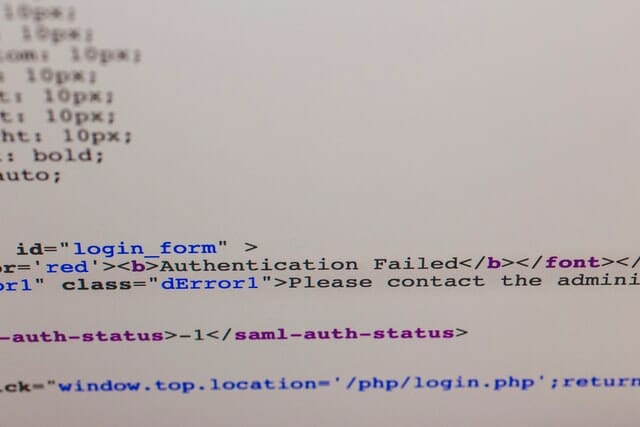
Software testing is a process that identifies bugs, documents software features and issues, tests for performance problems, and documents how to fix them. It can also help verify that the new changes to a system are working as designed in the software development life cycle.

An individual or team of developers does software testing to discover inadequacies between expected results and actual results. Testing entails running a program or application with the goal of locating software problems.
You can do it manually or by using automation tools. Manual testing often involves a software tester sitting down in front of the equipment, such as a computer, to see if it will behave as expected. This method would probably take more time than automated testing but maybe more accurate because the tester might read more of the application's features and identify more errors.
Automated testing uses a program to control the tested software, comparing it to test scripts or another version of the same product. Automation testing reduces human error and the time required for manual tests while maintaining accuracy.
Although test automation is breathtaking, manual testing remains the most accurate for most software developers.

The importance of software testing cannot be overstated. Quality for any given product is what the consumer perceives it to be, and this perception can vary by individual.
Perceived quality also changes as technology advances, so those involved in creating a new product must determine how their customer base will perceive its value. After all, companies can only sell what consumers are willing to buy.
The best way to determine the value of a product is by testing it on real users. This will identify any weaknesses or problems before they become major issues and before too much time and money is spent producing the product.
There are various testing types of software testing. We will discuss the most common classifications including functional testing, non-functional testing, and many more. Each type of software testing has its unique benefits that can help your business improve the quality of its products.
Let's take a closer look at the different types of testing below:
This type of software testing evaluates the compliance and performance aspects of the software as per its specified requirements.
It verifies that outputs match pre-defined functional requirements. However, if the test fails, it may be difficult to determine whether the fault is in the software (for example, improper coding) or incorrect functional specifications.
The types include unit testing, integration testing, system testing, acceptance testing and usability testing.
This type is performed at the function level and tests the functional requirements (or small group) of code. A new test case can be defined with each new internal code statement introduced into an application; however, every line of tested code must be covered by some set of tests within a single test case.
The extensive code coverage achieved through unit testing is often considered an integral part of the software development life cycle.

This is the second level of test, which extends Unit Testing by validating that individual units can interact correctly within each larger system.
This involves integrating all components, setting up test data, and preparing reports. It ensures that the software runs correctly with all features working as expected under actual operating conditions.
The customer performs this to determine if the product meets their requirements. Before acceptance testing can begin, a subset of tests must be passed, known as "baseline testing"; these tests must be automated. Acceptance testing generally involves a small set of scripted tests, whereas "regression testing" involves running the entire test suite.
Usability testing is used to measure how well an application or software can meet a user's needs. Moreover, it determines whether the design is intuitive and easy to use by novice users. It is usually done with a set of test cases that offer common workflows in the application, such as uploading files, buying products online, etc.

This type of software testing is conducted to measure reliability, performance, recoverability, and security, which are not part of functional requirements. Still, you must test important attributes of a system.
The types include:
The primary goal of regression testing is to detect software regressions (i.e., bugs introduced into one version of a program that somehow causes that version to fail).
It verifies whether it is reasonable for the software to proceed with further testing; it is normally performed using very simple test cases. It can be used as a predecessor to more exhaustive testing, providing quick results for any problems that would cause the software testing to be halted.
The type of check or automated suite ensures software works in general (not broken).
The objective here is to verify that the software product installation process is correct and complete and that the installed software operates correctly.
The objective of operational testing is to verify if you can use a system or application in its target operating conditions. This is typically performed by the client's users [end-users] or an independent testing team [outside the production team].
The objective is to detect the number of defects present in the software's released version(s). This normally entails some form of beta test or user group evaluation, resulting in a list of installation, operational, and usability problems. It can be used for defect trend analysis when executed periodically during development to track changes in the defect rate as a result of any process or product changes.
In this type of software testing, the focus is on detecting only how many bugs are present after the software has been released. The purpose is to test potential future problems caused by these bugs.

These tests measure how well the software performs in situations where it is required to use all (or most) of its resources. The goal is to see if the software can handle a large amount of work, whether memory, data, etc.
This evaluates how well the software executes in terms of responsiveness and stability. You can use it for both functional testing and non-functional testing.
Recoverability testing: This is often an important part of software testing because if the software cannot recover from user errors or external problems such as crashes, power outages, etc., it will not be useful.
Security testing: Although you can perform this type of software testing at all phases of the development cycle (and should ideally be performed throughout), it often receives the least amount of attention.
In black-box testing, the testing team does not know the internal structure or programming details. They look at the software from an external point of view and use only "scenario design methods" such as:
Black-box testers need no knowledge of the internal structure (source code) of an item being tested; they know the input and output, but not its internal workings. The software testing team can look at code to generate test cases based on how the software is structured ignorantly what the software does. Black box testing provides an understanding of structural quality.

Also called transparent box testing is a white-box technique. In this type of software testing, testers know the application and its internal logic to design tests.
White box testing, or clear box testing, is designed to determine if an application's implementation satisfies its specification and behavior as defined in the test cases and other documentation. It is the logical opposite of black-box testing. It is performed without knowing internal program logic or code, using only information provided in programming specifications, user manuals, and design documentation.
White box testing involves knowing the internal structure (or source code) of the tested item. The tester can use this knowledge to design test cases based on how the software is structured and thus what it does. White-box testing provides an insight into structural quality. It enables a deeper coverage of test cases with fewer tests.
Second Programmers Test: The Second programmers test determines if the software has been implemented correctly. The tester needs no knowledge of how the program should work or any information about the internal structure, inputs random data into the program, and observes the output. This type of software testing can be extremely difficult because it's not clear what the program is supposed to do.
Coding standard testing: Coding standard testing can be viewed as white-box testing because it generally uses information about the internal structure of the code. Standard coding compliance aims to ensure that a piece of software behaves consistently on different platforms and with different compilers.
Testing with Incomplete Information: Software testing with only incomplete information is a class of black-box testing techniques in which the tester is aware of neither internal structure nor source code. This might involve having some external software description, such as a requirements document or user manual. A standard form of software testing with incomplete information readily applicable to functional testing is comparison testing with a golden reference.
Comparison testing is when two implementations of the same interface are compared in functionality, performance, and other metrics. You can use it for tests that compare software with hardware or open-source software (OSS) with commercial closed source software (CSS).

Non-functional testing is a general term for all test efforts that examine aspects of the software not related to functionality, such as robustness/security/performance/installability/provision of utilities, etc.
This type of software testing aims to ensure the system meets its non-functional requirements. The objective is to validate those items unrelated to the system's functions.
The goal aims to verify that the software product can be installed correctly in various target machines and that correct operation can be expected in all cases. The number of target machines should be large enough to represent all expected configurations.
The objective is to verify that the software product has been correctly installed in the target machine for initial installation and subsequent updates or upgrades.
The objective is to ensure that application software developed on one platform can be installed and executed on a different platform. Compatibility problems can arise from the software's hardware requirements, operating system version requirements, level of application functionality required, etc.
The objective is to verify that the software product will recover from crashes or other catastrophic malfunctions in a defined manner. This style of software testing requires a careful definition of what kind of failure conditions will be simulated.
The objective is to identify how well the software product protects itself and its data from unintended or unauthorized use, modification, destruction [by testing known vulnerabilities].
The objective is to ensure that the correct results are achieved when using the software under various specific circumstances. Performance problems can arise from such factors as memory/hardware constraints, network bandwidth, poor algorithm choice or implementation, etc.
The objective is to ensure that the software product exhibits a correct and consistent behavior throughout its specified operating conditions and across releases. It would help if you executed testing in an environment as close as possible to the final one.

The software testing process is something that programmers and testers debate. One may argue to follow a linear test process; another follows an agile methodology such as SCRUM (part of the Agile Manifesto). Yet other people say cyber security should be involved in all phases of development. Another common argument is whether or not you should include regression testing in the testing phase.
The software testing process revolves around four main phases: Test Planning, Test Development, Execution, and Reporting. The whole point of having such a specific process in software development is that when you plan before you develop and test, there's less chance for errors in development, and when you find them in test coverage, you know exactly how to fix them.
The birth of any good idea starts with planning; the same goes for software development. Although some people believe that if you're following an agile methodology, planning isn't needed, planning is still a key part of the entire software testing process.
Before beginning with any test, you need to know what exactly your testing is and if it's even valid to test whatever it is on hand at this given moment in time. If you don't plan before you start developing tests, there could be no point in having them because you won't know if your tests are relevant for that period.
Once planning is done, the development of specific test cases can begin. These test cases should be designed to check everything that has been planned out before this phase, which makes the process go much more smoothly and ensures you don't miss anything important. Each test case should have a specific goal, scope, steps to follow, input values needed if any are needed, and an expected result.
After the planning has been done for all test cases, you should execute them against the program/software/application being tested. The testers will usually do this part but having at least one person who isn't a programmer or a tester go through the program to try and do things that might not have been planned can also be helpful.
The idea is that each test case you develop should cover every foreseeable aspect, edge case, and use case possible to make sure everything has been checked. This phase requires human control since computers can't think like humans, and sometimes testers find problems that aren't even apparent to them.

After the execution, or searching for bugs as some call it, is complete, you need to report all of your findings. This part isn't usually done by testers alone, mainly because there might be too much information to go through. Each bug needs to be reported with its unique identifier, the person who found it, how they found it, what was wrong with it, and whether or not it has been fixed.
This will help everyone get a good perspective of all the bugs found throughout testing so they can make an accurate forecast on how long it will take to fix the bugs and release a patch.
The software testing process should be done throughout a project's entire life cycle, not just at the end when you're trying to fix all the bugs before releasing them into the world. If this process isn't followed, there will surely be severe problems that could have been prevented with good planning and comprehensive software testing.
Software testers and developers need to work together as a team. They should collaborate and find ways for better communication and problem-solving. This is the best way to come up with quality products that meet the expectations of end-users. Otherwise, companies will be losing money and reputation.
Let us look at how software testing is essential to your company. It will:
The cost incurred to provide support to your customers can be staggering. Bugs in a product stress out customers and leave them with no other choice than to reach out for help. A good product should cover all its bases so that users don't have questions or seek guidance on frequently asked issues.
Customers want to get the best user experience. They buy your product because they trust you and believe you could provide them with what they need. An ideal product reduces the customer's burden by minimizing bugs and glitches. IIt'sbeneficial in the long term for both customers and businesses when they get a good product that is easy to understand and use.
Software testers work hard to ensure that the product they deliver is of high quality. They ensure that it meets the expectations of the users. They also enhance efficiency and productivity throughout the development phase, which leads to lower costs. This kind of result is what every business company desires for their products.
To avoid bugs in testing, you need to write solid code with fewer errors and mistakes. It does save not only time but also reduces the overall cost of development. When your app becomes available early in the market, you can tap into the potential clientele looking for solutions to problems they face.
When you detect bugs, you can improve the product. Thus it becomes easier to discover new opportunities that might help you grow your market share or customer base. Bugs can be viewed as burdens that prevent your product from reaching its full potential. And to realize that, you need to make your product better and bug-free.
When a customer uses a poorly designed application, they have no other choice but to switch platforms altogether. On the other hand, when you deliver a superior product with all possible features, customers get attached to it. And if you make the product bug-free, they will be your loyal clients for a long.
Many bugs in software development cause data loss or malicious attacks on database servers, leading to the hacking of user accounts and sensitive information theft. This can lead to instability in an organization's image and trustworthiness, affecting the customer base.
When your product is free of bugs, you no longer have to worry about apps crashing when in use. It means that users can work seamlessly on their tasks without facing speed bumps along the way. With an optimal user experience, employees are more productive and can give their best to the organization.
An error-free app means happy customers, and a happy customer base is what every business craves. A good product builds trust among your clients and strengthens your reputation in the market as a company that delivers quality products on time without any issues.
A robust product with all possible features and zero bugs increases the value of your app. Users endorse your product which leads to higher ROIs for your business. A bug-free product spares the users from unnecessary hassles and takes care of customer needs effectively.

Choosing software testing can be confusing even for the most seasoned software tester. There are so many types of testing that it can get confusing. Should you do black-box testing, white box testing, or unit testing?
What is system integration testing, and more importantly, an automated functional UI test engineer? Whether you're just starting in IT or have already worked in the industry a long time, no one likes being confused.
Here are some of the considerations before choosing which software test to go for:
1) Which Test Is The Most Important? - What's the most important thing to you, your project, or the company? Different types of software testing are focused on different aspects. Some tests will give you feedback about whether the features work as expected; others will tell you if there are any performance issues, and some might even help you with your documentation.
2) What's Your Experience? - If you're a novice, it might be a good idea to start with some of the basics and work your way up from there. On the other hand, if you have already been working in this industry for a long time, perhaps you can go straight ahead and do some more advanced tests.
3) How Much Time Do You Have? - When estimating your test efforts, the best practice is to take the largest effort and base all of your estimates on that. This means if you're going to do a UI regression test for 8 hours, then it might be a good idea not to mention that you're also going to do some unit testing in the same timeframe.
4) Who Is Your Customer? - Is your software for internal use only, or is it for external customers? If you're doing functional tests, they will be driven by your business users and testers. Still, if you're doing system integration testing, an operations person might have to consider that.
5) How Is Your IT Systems? - Depending on your company setup, you might be required to work with developer tools, which means you need to understand the standard procedures and how they're used. An example of this is knowing what type of source control system your organization uses.
6) What Type Of Software Testing Do You Want To Do? - When you start your software testing career, it's a good idea to get some exposure to all of the different software tests. Start by understanding each type of software test and then focus on one or two types that interest you the most. If you find out later in your career that this isn't the area you want to focus on, it won't be too late.
7) What Is Your Company'sTest Strategy? - It might also be a good idea to ask about the company's testing strategy and how that works with your testing approach. If everyone is working alone and there isn't much communication between teams, you might want to go for a more lightweight approach. On the other hand, if you work in an agile environment with many collaboration opportunities between different teams, it might be good to do some more advanced tests.
Most companies have a very strong QA team that does testing of the application on every build, but they don’t have a release management process where there is at least one full regression cycle run before the product gets shipped to customers.
In simple terms, this means that whenever there is a new build with some bug fixes, the product team delivers it to the customer and then starts getting calls for issues that were not present in the previous build. This is where they realize that their regression testing wasn’t up to mark or was incomplete.
No matter what type of software testing, it's important to understand the different types and which one is most relevant for you. Once you know that, do some research and find out how that works in your company or organization.
Be open-minded while familiarizing yourself with new concepts and ask questions if you're unsure about anything. The more you learn about the many sorts of testing, the easier it will be for everyone to understand your point of view and how you work.
The more you do software testing, the fewer software bugs you'll encounter. To find and fix as many software errors as possible, a company needs to have both automation testing and manual testing methods in place.
You should read about the testing pyramid to see how software developers could avoid wasting time and testing efforts on time-consuming tasks that they can complete more efficiently and faster.
